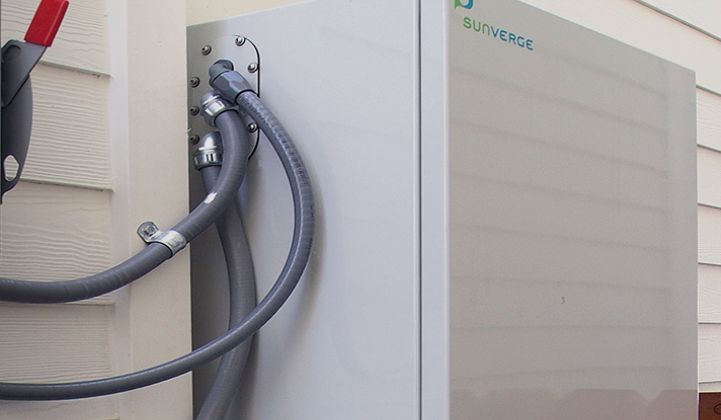New York utility Con Ed, SunPower and Sunverge just formally announced a $15 million virtual power plant pilot, part of New York's Reforming the Energy Vision (REV) effort, which will outfit about 300 homes in Brooklyn and Queens with leased high-efficiency solar panels and lithium-ion battery energy storage systems. The project is meant to explore the revenue streams made possible by software-enabled aggregation of energy storage. Applications might include T&D deferment, peak shaving, frequency regulation, capacity markets and wholesale markets.
The project proposal and its details have been percolating for more than a year -- this announcement marks the green light for the project to launch this summer.
GTM reported that under a plan submitted in July 2015, Consolidated Edison will initially own the storage systems, with a goal of gathering 1.8 megawatts/4 megawatt-hours of capacity to serve as a “clean virtual power plant” (PDF). But utility ownership in this case is a way to get the systems in the field, test their technical capabilities, and collect the data required to create the third-party market structures envisioned under REV. It's an opportunity to learn how batteries operate in the real-world residential environment and how much consumers are willing to pay for backup power.
Each home will be outfitted with a 7-kilowatt to 9-kilowatt rooftop PV system and a 6-kilowatt/19.4-kilowatt-hour energy storage system. In addition to the utility-facing grid services, the installation provides homeowners with backup power for essential loads in the home. Energy Storage Update reports, "Con Edison is currently working with the New York Fire Department to get Sunverge’s lithium-ion battery technology approved in the state."
Sarah Singleton, senior VP of marketing at Sunverge, told GTM, "The units are designed to be both a local and an ISO resource, with direct control room integration, not just a lower power load modifying source (Tesla is more akin to a behavioral, non-integrated, demand response resource than a true multipurpose VPP)."
"These things are designed to be a grid asset, which is one of the fundamental differentiators for us," said Ken Munson, the CEO of Sunverge, in a previous interview. The Sunverge energy storage system is housed in a Nema 3R enclosure with a secondary steel enclosure for the battery. "We're really heavy on deployed safety and really, really heavy on [upholding a policy that] no one's allowed to mess with these units once they're deployed. So it's not just hanging a thing on the wall and walking away -- it's a grid asset."
“Stuffing lithium-ion or flow or any kind of battery in a box and putting it in as a simple backup device is not that exciting,” Munson said in another interview with GTM. “But putting a cloud layer with real-time energy services on top, and being able to aggregate and control a fleet of devices on the grid in near-real time -- that’s something special.”
Other firms like Stem, Green Charge Networks, Sonnen, Advanced Microgrid Solutions and Panasonic are also pursuing this aggregated energy storage application. Stem is already participating in an 85-megawatt project with Southern California Edison to provide local and system-wide capacity for the utility.



